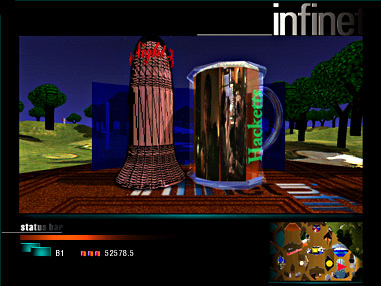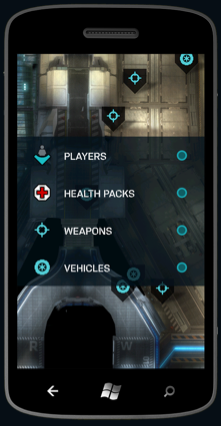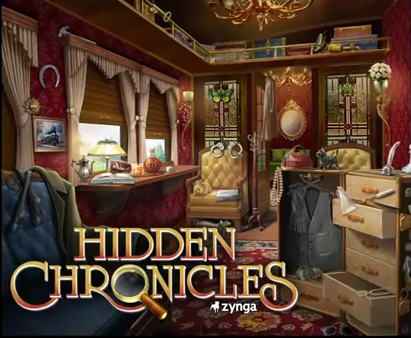The latest incarnation of the controls that governments and corporations are attempting to put in place is SOPA. This seems like another faltering step towards a Team America style policing of the World Wide Web. This takes me back to the mid nineties when I saw the first web browsers and the speed with which commercial interests scrabbled to work out how they could exploit it. I thought that eventually cyber space would reflect real space. In the way that towns have ‘safe’ centres packed with chain stores and advertising. The outer edges sometimes has the quirkier, left-field places. At the time I was studying interactive media and, rather than write an essay, decided to create an interactive story. It was called Infinet.

Infinet stores
I created Infinet with four fellow students. We mashed-up brands – the giant pink tower was for Glaxo-Welcome with a Coke style ribbon logo and jingle. We had a confessional, a bank and a store selling Nike Air – flavoured air in breathable capsules. A visitors’ movement around this space was very limited to basic left and right panning and pre-rendered steps forward.
But there were cracks hacked into the veneer of Infinet. A visitor might stumble upon a bit of graffiti or lift a manhole cover. If they did they would find themselves in an endlessly spiraling vortex of unmediated spaghetti that represented the weird and wonderful, individual, quirky, sick and human web that we currently know. The way the visitor moved around this space was free-flowing. They could scroll, swoop and dive any which way they liked. I wanted to compare the narrow options of movement in Infinet which was like all the “interactive” options around at that time. It struck me as odd that a button that did something was referred as adding interactivity. For me all this did was react. The narrow corridor of pre-defined and pre-rendered “interaction” (Myst et al) also rang false. So the comparison between the way a visitor moved was part of my idea to begin to explore the notion of what interactive meant.
Some additionally playful elements we added was a Status bar that displayed your status using marketing (socio-economic) categorys such as B1 or D4. The project was successful and we won a place at the New Talent Pavilion at Milia ’97. I got to fly business class to Cannes and show Infinet to 1,500 of the good and the great of new media in the same hall that they present the film awards.
We built Infinet while studying for MA Design for Interactive Media (DIM) at Middlesex University. The project was assembled in Director 5, coded in Lingo with the models and fly-through in Strata 3D.


